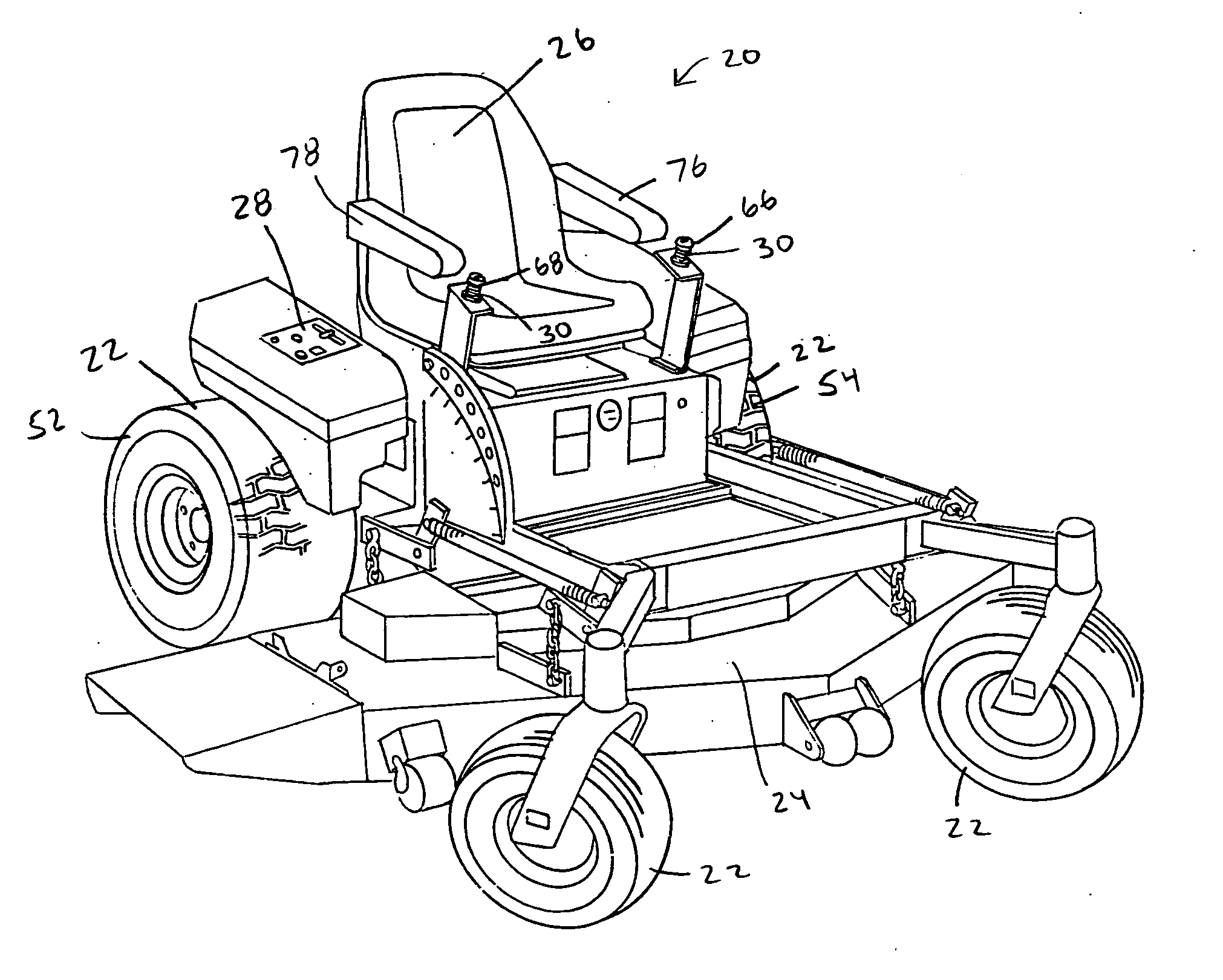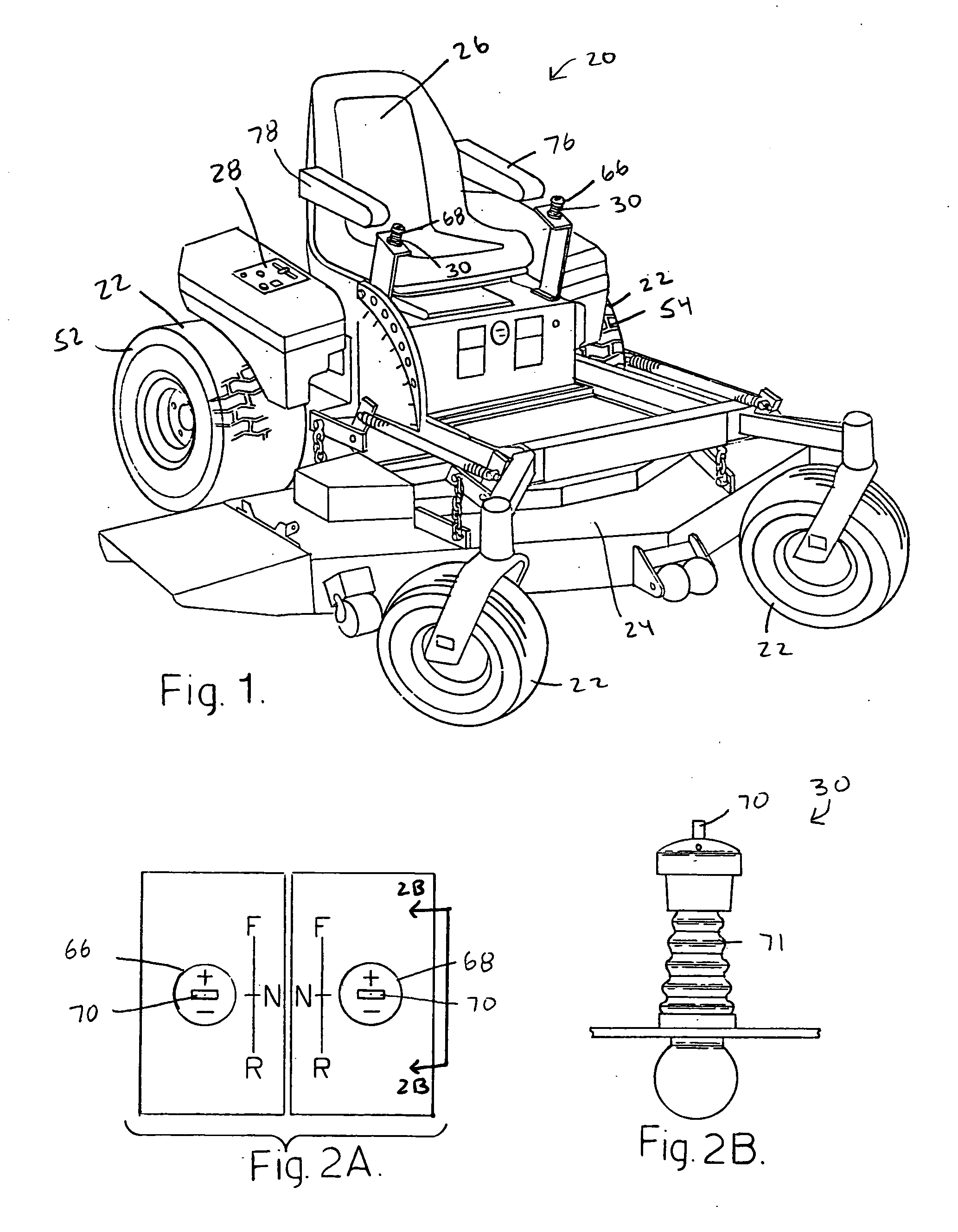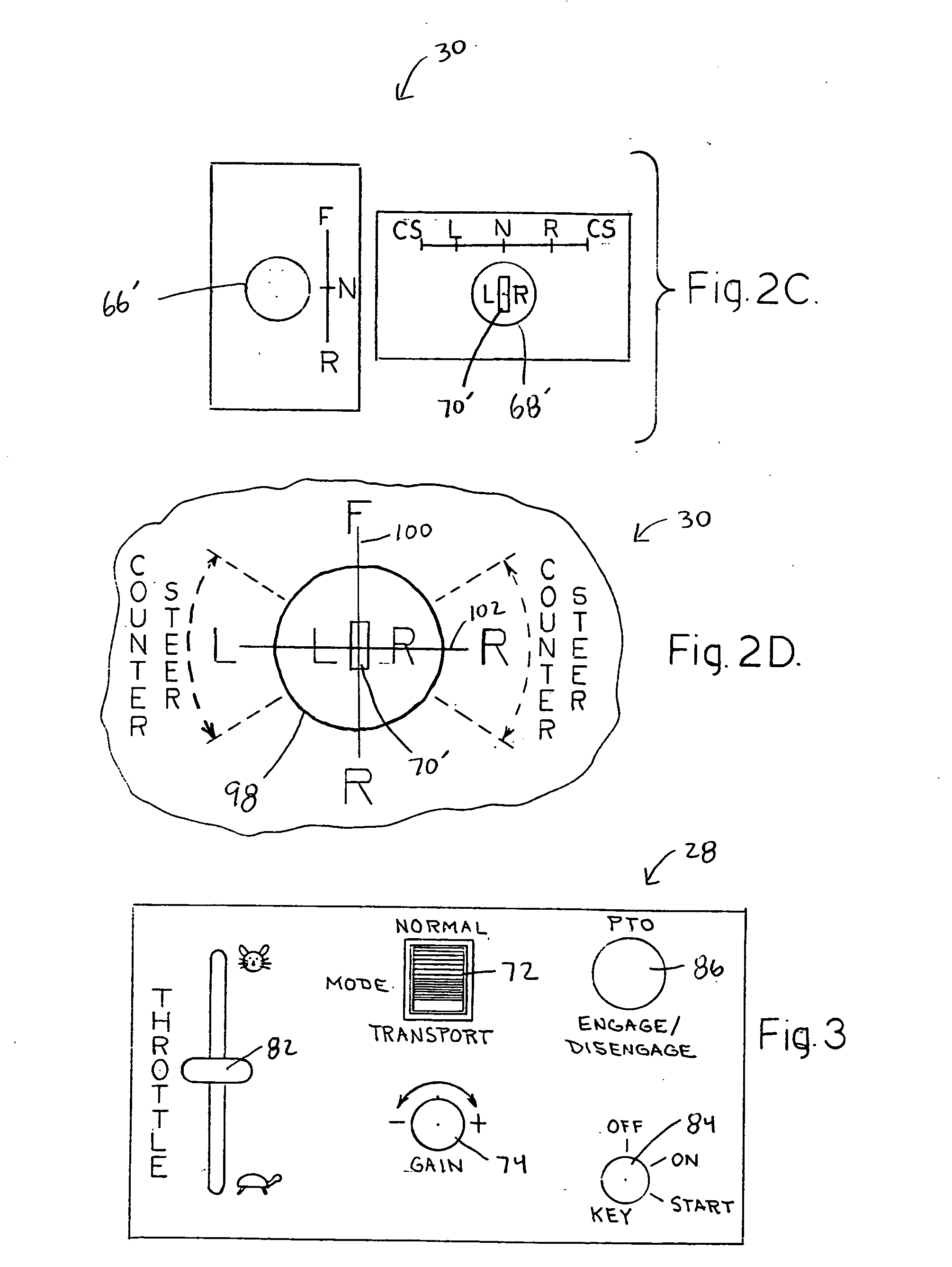Drive-by-wire lawnmower
a lawnmower and drive-by-wire technology, applied in the direction of mechanical equipment, non-deflectable wheel steering, transportation and packaging, etc., can solve the problems of difficult time-consuming, difficult adjustment of the control and operation of the lawnmower, and the inability to adjust the mower while the mower is operating
- Summary
- Abstract
- Description
- Claims
- Application Information
AI Technical Summary
Benefits of technology
Problems solved by technology
Method used
Image
Examples
Embodiment Construction
[0033] The following description of the preferred embodiment(s) is merely exemplary in nature and is in no way intended to limit the invention, its application, or uses.
[0034] Referring to FIG. 1, there is shown a zero turning radius vehicle, in the form of drive-by-wire riding lawn mower 20, in accordance with a preferred embodiment of the present invention. While the zero turning radius vehicle is illustrated and described as being a drive-by-wire riding lawn mower 20, it should be understood that the principles of the present invention are applicable to other zero turning radius vehicles, including but not limited to skid steer loaders, other turf care vehicles, and the like. Zero turning radius vehicles are generally defined as vehicles having two or more wheels capable of independent bi-directional rotation so that the zero turning radius vehicle can perform counter steering operations. That is, the two or more independent wheels of a zero turning radius vehicle are capable of...
PUM
 Login to View More
Login to View More Abstract
Description
Claims
Application Information
 Login to View More
Login to View More - R&D
- Intellectual Property
- Life Sciences
- Materials
- Tech Scout
- Unparalleled Data Quality
- Higher Quality Content
- 60% Fewer Hallucinations
Browse by: Latest US Patents, China's latest patents, Technical Efficacy Thesaurus, Application Domain, Technology Topic, Popular Technical Reports.
© 2025 PatSnap. All rights reserved.Legal|Privacy policy|Modern Slavery Act Transparency Statement|Sitemap|About US| Contact US: help@patsnap.com



